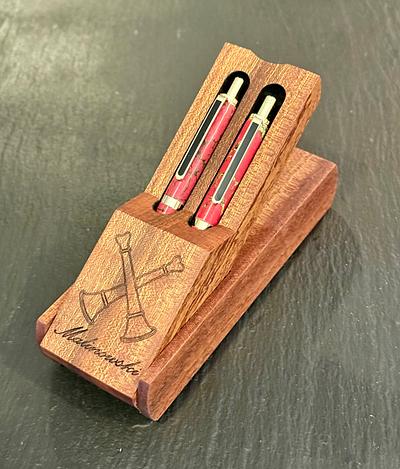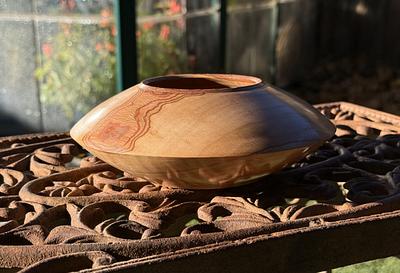Share your craft projects
Make new craft buddies
Ask craft questions
Blog your craft journey
Unearthing The Fascinating History Of Woodworking
Woodworking is a craft that has undergone refinement and advancement over centuries, boasting a rich and intriguing history that traverses from ancient civilizations to the present era.
The origins of woodworking are explored, encompassing the early tools and techniques utilized by our predecessors, as well as the intricate woodworking practices of ancient civilizations such as Egypt, Greece, and Rome.
The progression of guilds and master craftsmen during medieval times, the influence of technological advancements on woodworking in the Industrial Revolution, and the current trends and innovations that shape contemporary woodworking are delved into.
The historical narrative of woodworking is unearthed, offering insight into the evolution of this enduring craft.
The Origins of Woodworking
.jpg_00.jpeg)
The historical lineage of woodworking can be traced back to antiquity, delineating a captivating narrative along the annals of craftsmanship and tradition.
Delving into the genesis of this craft illuminates the transformation from archaic methodologies to contemporary approaches, underscoring the proficiency and commitment demonstrated by artisans across various epochs.
Early Tools and Techniques
The early woodworking pioneers relied on fundamental tools and techniques to craft wood into both functional and ornamental pieces. Carpentry skills were developed through precise workmanship, utilizing essential tools and materials to bring elaborate designs to fruition.
These early craftsmen possessed an in-depth understanding of wood characteristics and the necessary tools for their manipulation, including hand saws, chisels, pliers, and rasps. Each tool played a vital role in the woodworking process, enabling artisans to intricately carve, shape, and refine raw materials into exquisite works of art.
The artistry involved in fashioning wooden masterpieces was truly remarkable, demonstrating the dedication and expertise required to transform ordinary pieces of wood into intricate and visually striking creations.
Woodworking in Ancient Civilizations
Woodworking had a significant presence in ancient civilizations such as Egypt, Greece, and Rome, where skilled artisans crafted exceptional wooden sculptures and furniture items. The artistic manifestations of these societies through woodworking demonstrated a fusion of creativity and cultural legacy, resulting in a lasting heritage of fine craftsmanship.
Egypt, Greece, and Rome
The woodworking practices in ancient Egypt, Greece, and Rome were distinguished by the intricate and culturally significant creations produced by craftsmen of these civilizations. The wooden sculptures and furniture items originating from these ancient societies serve as enduring examples of the craftsmanship and artistic abilities of the artisans.
In ancient Egypt, wooden objects held not only utilitarian value but also carried symbolic and religious meanings. The meticulous craftsmanship was demonstrated through the creation of elaborate furniture pieces and ornamental statues that adorned temples and palaces, reflecting the profound respect for wood as a material.
Similarly, in Greece, the art of woodworking progressed to include intricate designs in furniture and architectural embellishments, focusing on well-proportioned structures and decorative patterns inspired by the natural world.
The woodworking techniques in Rome reached new heights by incorporating marquetry and inlay work into furniture designs, underscoring their expertise in woodworking and design aesthetics.
Medieval Woodworking
The period of medieval woodworking signifies an epoch during which guilds and master craftsmen thrived, demonstrating exceptional skills and craftsmanship. The legacy of medieval woodworking is distinguished by the adeptness of artisans and the formation of guilds that upheld the standards of quality and innovation.
The Rise of Guilds and Master Craftsmen
Throughout the medieval period, woodworking experienced a significant transformation characterized by the emergence of guilds and master craftsmen who played pivotal roles in elevating the standards of the craft. These seasoned artisans diligently refined their expertise over extensive periods of commitment, thereby establishing a profound legacy marked by innovation and a commitment to excellence within the realm of woodworking.
Their comprehensive understanding of various wood types, tools, and techniques enabled the creation of intricate pieces that not only served as a testament to their exceptional abilities but also reflected unparalleled skill. Guilds functioned as platforms for collaborative endeavors and the exchange of knowledge amongst woodworkers, thereby fostering an environment conducive to perpetual advancement.
The meticulous precision and artistry demonstrated by these craftsmen established a definitive standard for subsequent generations, instilling a culture of distinction in woodworking that continues to exert a profound influence on contemporary artisans to this day.
Woodworking in the Industrial Revolution
The woodworking industry experienced a significant transformation during the Industrial Revolution through the incorporation of technological advancements and mass production techniques. Innovations within the sector revolutionized conventional craftsmanship, leading to the adoption of efficient production methods and enabling the large-scale manufacturing of wooden goods.
Impact of Technology and Mass Production
The impact of technology and mass production on woodworking during the Industrial Revolution resulted in significant advancements in the field. Innovations in tools, machinery, and production processes brought about a revolution in the craft, leading to the adoption of more efficient and scalable practices.
These technological advancements enableed woodworkers to manufacture goods in larger quantities and with enhanced precision compared to previous methods. Traditional hand tools began to be gradually phased out in favor of mechanized equipment such as power saws and lathe machines, facilitating faster and more precise work. Moreover, the implementation of mass production techniques standardized processes and played a pivotal role in meeting the escalating demand for woodworking products at that time.
Consequently, the Industrial Revolution represented a pivotal moment in the evolution of woodworking practices, laying the foundation for contemporary methodologies and techniques within the industry.
Modern Woodworking
Contemporary woodworking incorporates current trends and advancements that integrate traditional craftsmanship with modern design principles. The progression of woodworking in the contemporary age demonstrates a fusion of creativity and innovation, influencing the artistic expression of craftsmen in crafting handmade furniture and sculptures.
Contemporary Trends and Innovations
The current trends in woodworking reflect a period of innovation that highlights the artistic nature of the craft. Contemporary woodworkers are reshaping traditional practices through unique design concepts and exploratory methodologies, thus presenting woodworking as a dynamic convergence of heritage and inventiveness.
This transformation in woodworking methodologies has merged time-honored artisanal techniques with state-of-the-art technology, yielding intricate creations that challenge the limits of imagination. Drawing inspiration from natural surroundings, architectural marvels, and cultural diversity, modern craftsmen translate these influences into captivating wooden artifacts that narrate tales and evoke sentiments.
Moreover, an emphasis on sustainability and environmentally conscious practices significantly influences the present woodworking milieu, as many craftsmen opt for ethically sourced materials and eco-friendly procedures. Consequently, woodworking today not only showcases masterful skill but also exemplifies a profound dedication to innovation and sustainability.
Frequently Asked Questions
What is the history of woodworking?
The history of woodworking dates back to ancient civilizations, with evidence of woodworking found in Egyptian tombs and Greek temples. It has evolved over time, with different techniques and tools being developed.
What were some of the earliest woodworking techniques used?
Some of the earliest woodworking techniques used include carving, joinery, and woodturning. These techniques were used to create functional items such as furniture, tools, and weapons.
How did woodworking become an important industry?
Woodworking became an important industry during the Industrial Revolution, when machines were developed to mass-produce wooden items. This led to a rise in furniture making and other woodworking businesses.
Who were some famous woodworkers in history?
Some famous woodworkers in history include Thomas Chippendale, who was known for his ornate furniture designs, and George Nakashima, who popularized the use of natural edges in woodworking.
What impact did technology have on woodworking?
Technology has greatly impacted woodworking, with the invention of power tools and machinery making the process faster and more efficient. However, some traditional woodworkers still prefer hand tools for their unique craftsmanship.
What role does woodworking play in modern society?
In modern society, woodworking is both a hobby and a profession. It is still used to create functional items, but also has a strong presence in the art world with wood being used as a medium for sculpture and other forms of art.






















